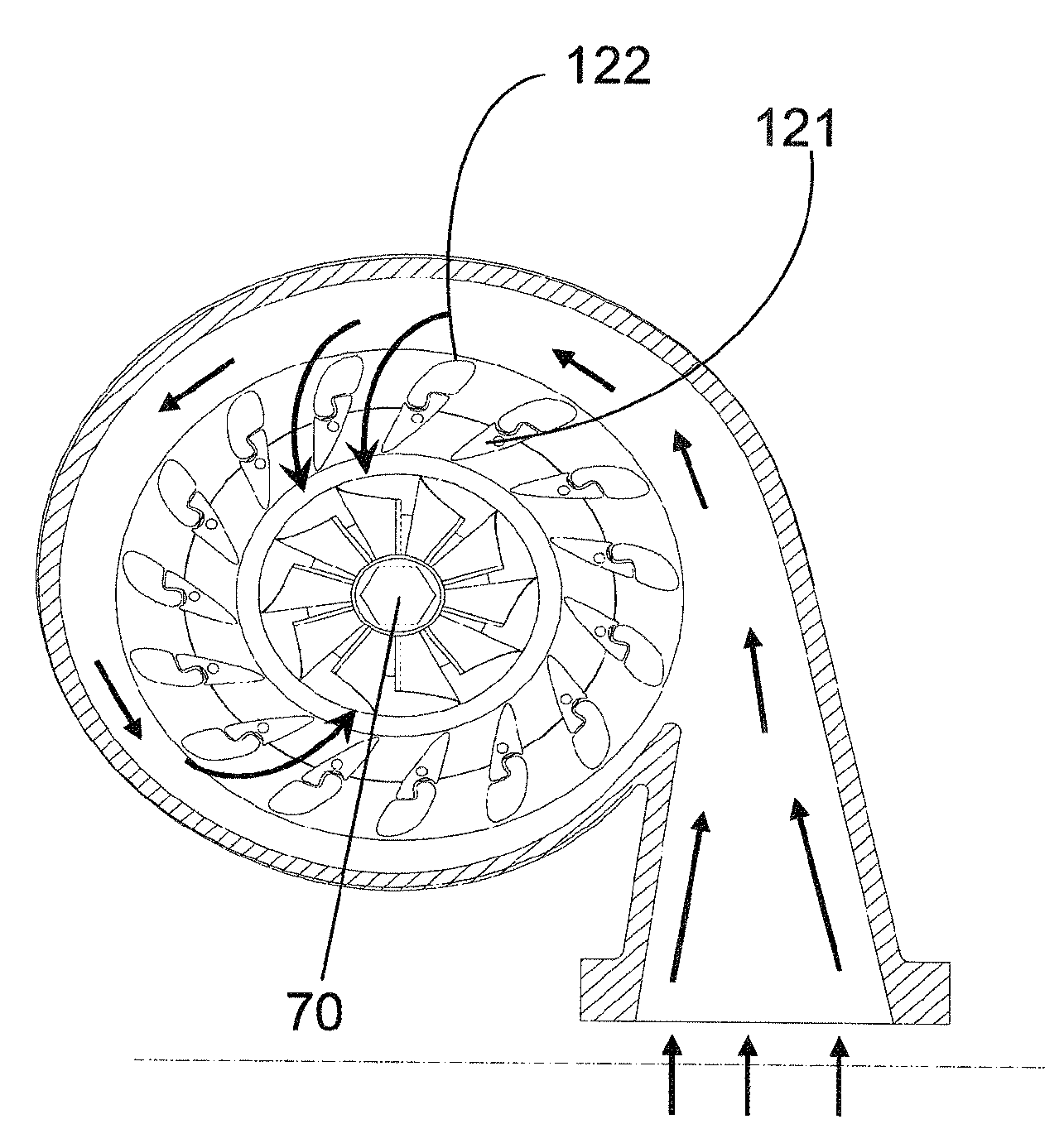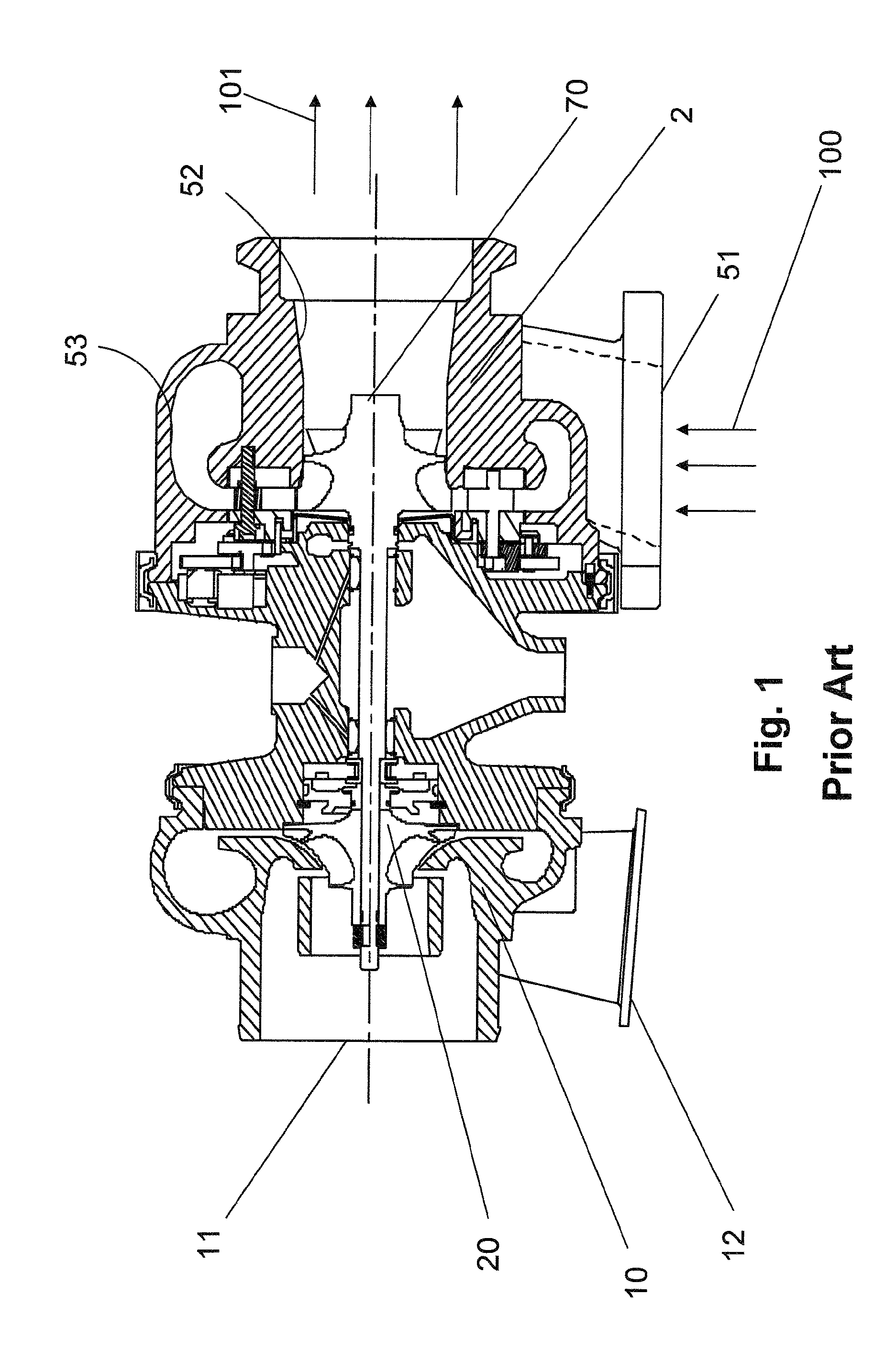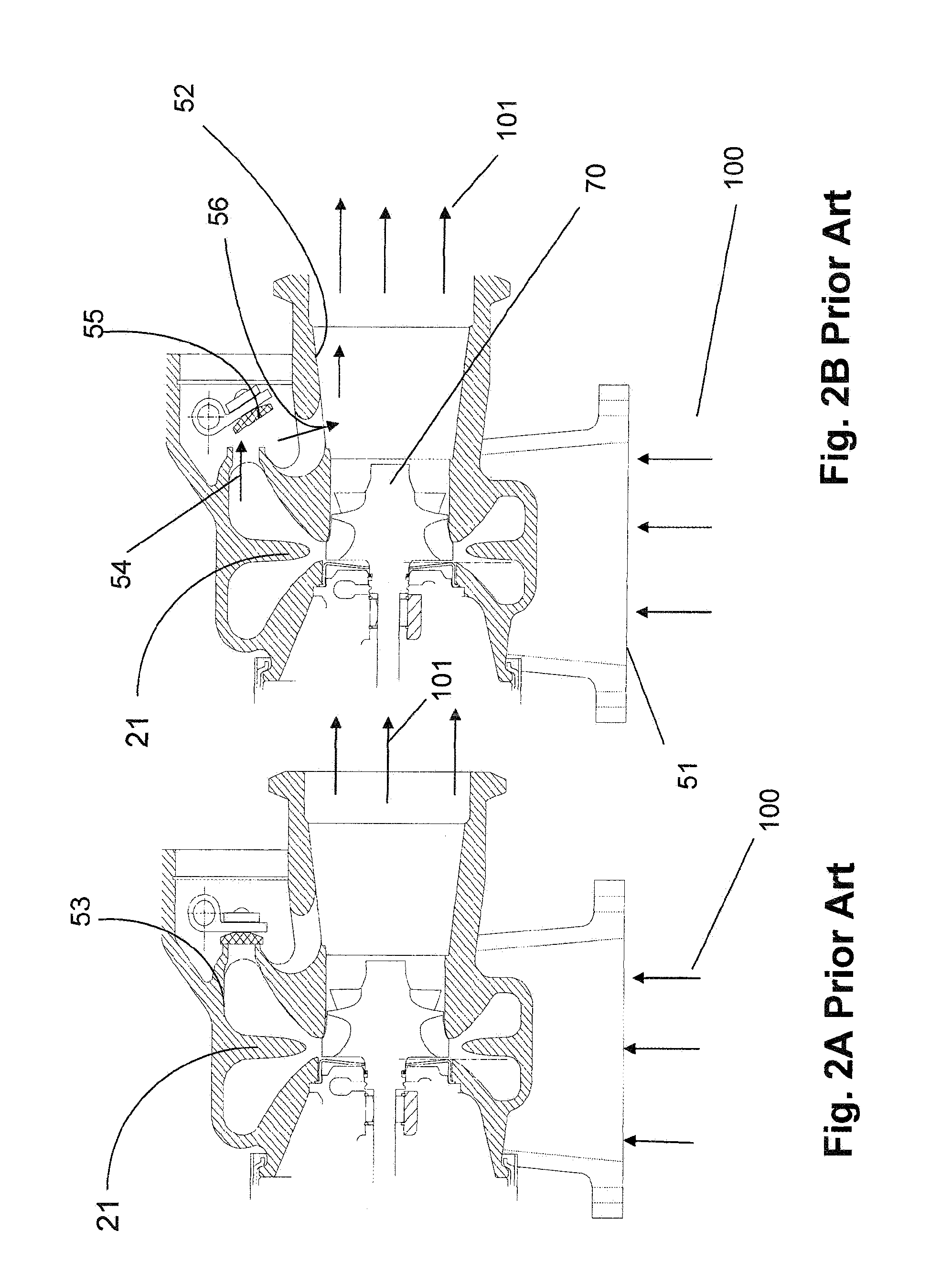Simplified variable geometry turbocharger with vane rings
a variable geometry, turbocharger technology, applied in the direction of machines/engines, stators, liquid fuel engines, etc., can solve the problems of limiting the boost level of the engine, the critical pressure ratio at which the valve opens is detrimentally affected, and the turbine power control characteristics are rudimentary and coarse, so as to achieve low cost and modulate the boost pressure
- Summary
- Abstract
- Description
- Claims
- Application Information
AI Technical Summary
Benefits of technology
Problems solved by technology
Method used
Image
Examples
first embodiment
[0047]In the first embodiment, shown in FIGS. 8A, 8B, 9A and 9B, a plurality of vane shapes (92) are arranged on an outer vane ring (90) such that these vanes present a leading edge (94) of a vane shape to the incoming exhaust airflow (102), turning the airflow from the volute to a direction (103) aimed at the vortex of the turbine wheel. On an inner vane ring (91), a plurality of vane shapes (93) are arranged such that these vanes present the trailing part of the leading vane shape, arranged on the outer vane ring, to “pinch” the flow of exhaust gas and thereby further guide and influence the flow direction of the exhaust gas coming from the arrangement on the outer vane ring. One of the outer vanes (92) and one of the inner vanes (93), when in registry, form a general airfoil shape, with the outer vane (92) forming the leading edge of said general airfoil shape, and the inner vane (93) forming the trailing edge of said general airfoil shape. The inner ring of vanes and outer ring ...
second embodiment
[0053]The design of the vanes in the second embodiment is such that circumferential displacement of one of the vane rings, with respect to the other vane ring, or with respect to the turbine housing or bearing housing, for cases in which the vanes on the non-rotational vane ring are fabricated onto the sidewall of either the turbine housing or bearing housing. This circumferential displacement of one vane ring causes motion on the other vane ring such that a vane, mounted so that it can rotate about an axis (120) parallel to the turbocharger centerline, rotates about said axis (120) to modify the flow volume to the turbine wheel.
[0054]In FIG. 12A and FIG. 12B the vanes are arranged such that the outer vane ring (90) moves in a circumferential motion (96). The circumferential displacement of the outer vane (90) to the inner vane ring (91) causes the tongues (126) on the vanes (122) to rotate the vanes (121) on the lower vane ring (91) about the axes (120) so the vanes effective cambe...
PUM
 Login to View More
Login to View More Abstract
Description
Claims
Application Information
 Login to View More
Login to View More - R&D
- Intellectual Property
- Life Sciences
- Materials
- Tech Scout
- Unparalleled Data Quality
- Higher Quality Content
- 60% Fewer Hallucinations
Browse by: Latest US Patents, China's latest patents, Technical Efficacy Thesaurus, Application Domain, Technology Topic, Popular Technical Reports.
© 2025 PatSnap. All rights reserved.Legal|Privacy policy|Modern Slavery Act Transparency Statement|Sitemap|About US| Contact US: help@patsnap.com



